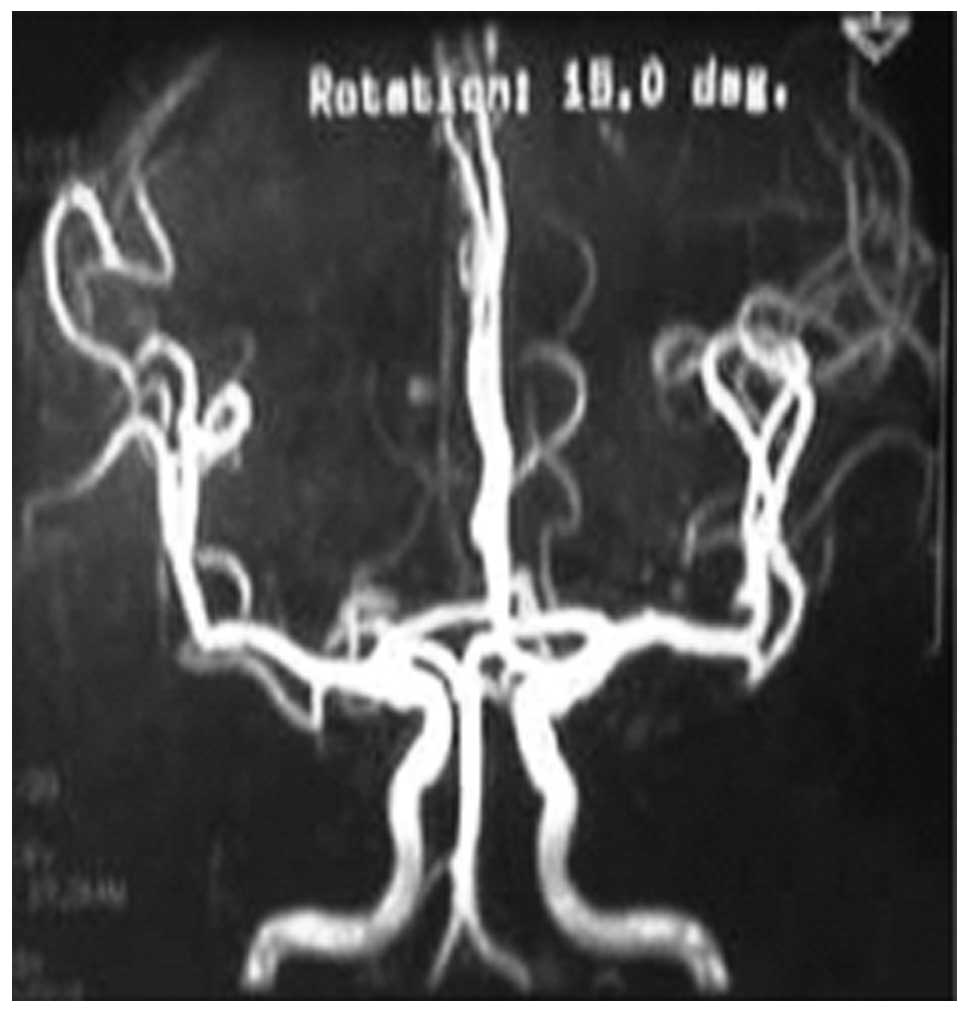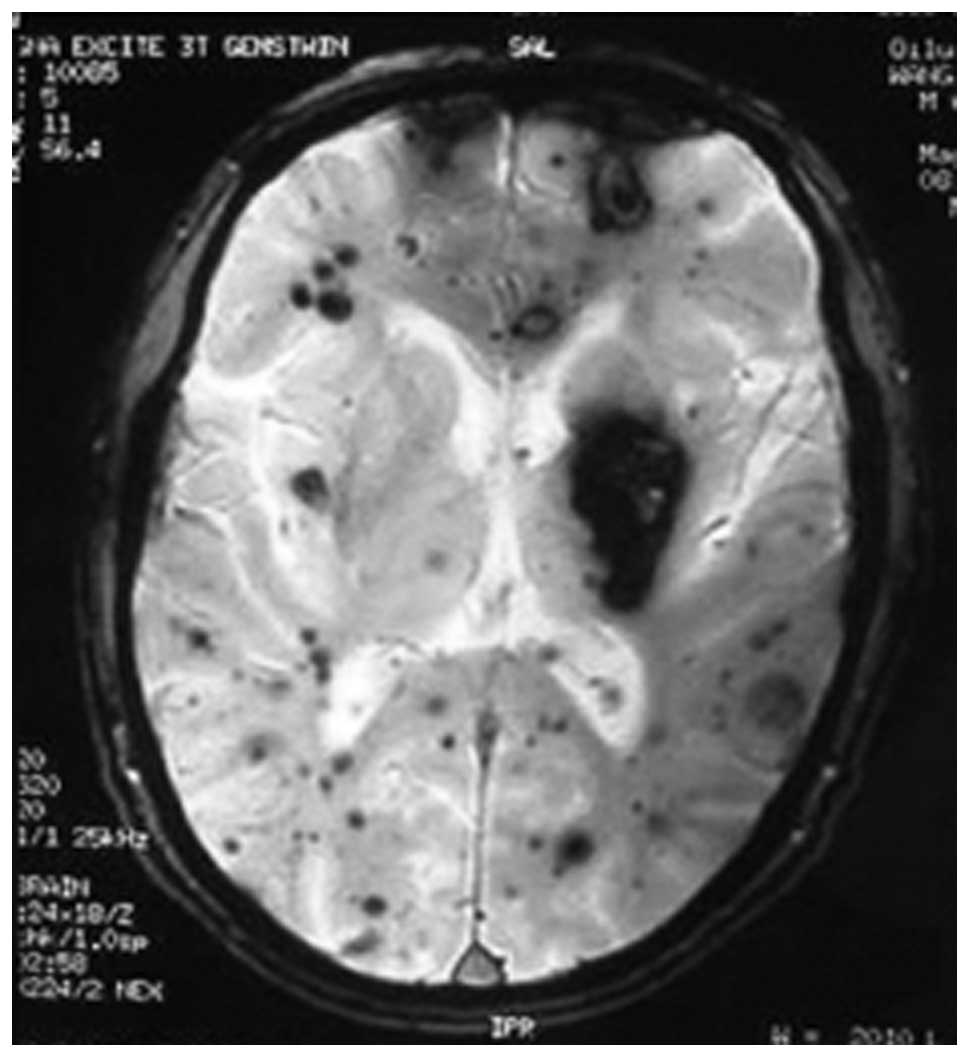The value of T2*-weighted gradient echo imaging for detection of familial cerebral cavernous malformation: A study of two families
- Authors:
- Published online on: November 30, 2012 https://doi.org/10.3892/etm.2012.845
- Pages: 448-452
Metrics:
Total
Views: 0 (Spandidos Publications: | PMC Statistics:
)
Total PDF Downloads: 0 (Spandidos Publications: | PMC Statistics:
)
Abstract
The aim of this study was to investigate the value of T2*-weighted gradient echo imaging (GRE T2*-WI) for the detection of familial cerebral cavernous malformation (FCCM). Twenty-six members of 2 families with FCCM were examined using computed tomography (CT), conventional magnetic resonance imaging (MRI) and GRE T2*-WI sequences. We identified 12 cases of FCCM using GRE T2*-WI sequences. These 12 patients had multiple lesions (mean 23). The lesions were most commonly located in the ganglia. Other areas included the cortex-subcortex, thalamus, cerebellum and brainstem. These lesions appeared as a reticulated core of mixed signal intensity with a surrounding rim of decreased signal intensity representing hemosiderin from previous hemorrhages. The mean numbers of lesions and cases of FCCM identified by various conventional MRI sequences were 5-17 and 3-9, respectively. Conventional MRI examination involved T1‑weighted imaging (T1WI), T2-weighted imaging (T2WI), T2‑fluid‑attenuated inversion recovery (T2Flair), diffusion‑weighted imaging (DWI) and spin-echo imaging (SE) sequences, in that order. The numbers of lesions identified by MRI were fewer than those identified by GRE T2*-WI. CT only identified 3 cases with large lesions combined with hemorrhage and calcification. These findings suggest that GRE T2*-WI is the first choice when diagnosing FCCM compared with CT and conventional MRI.















